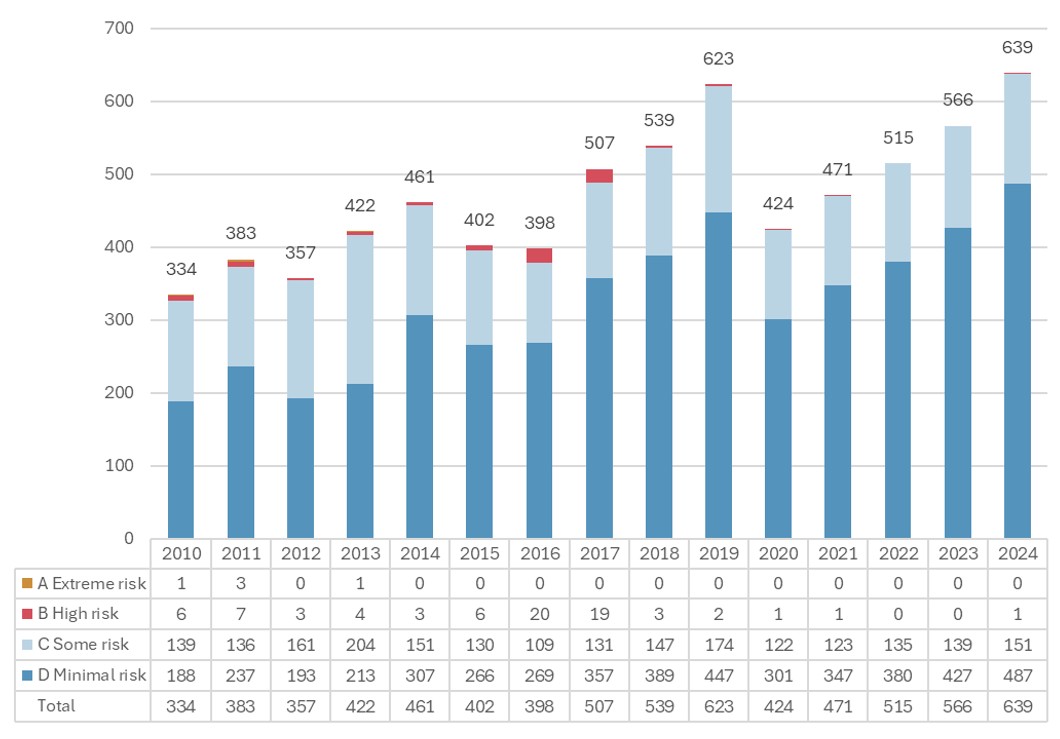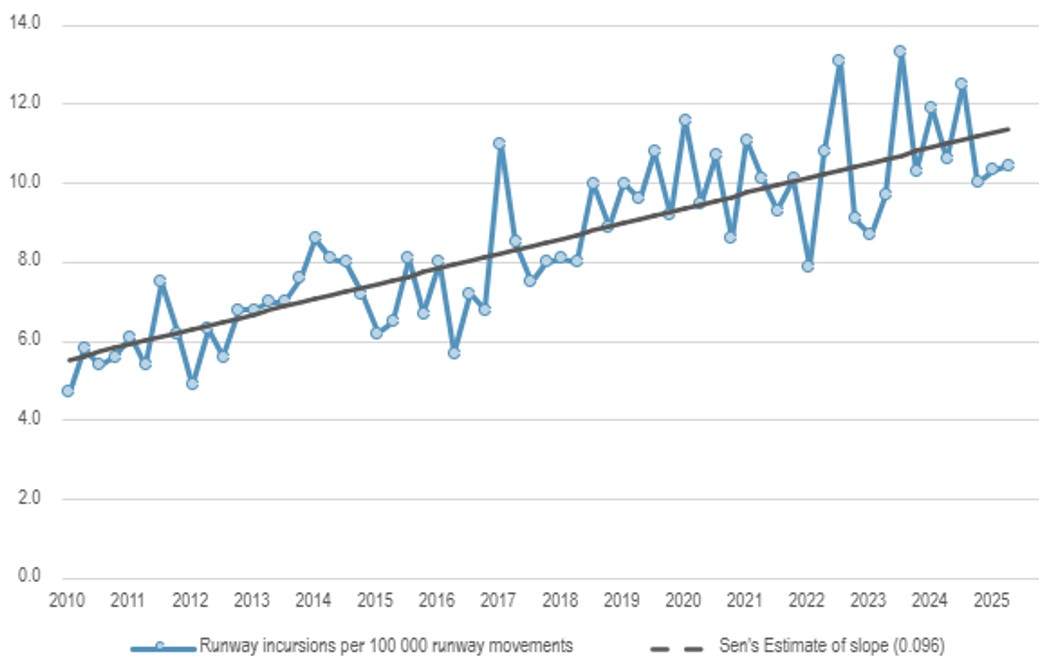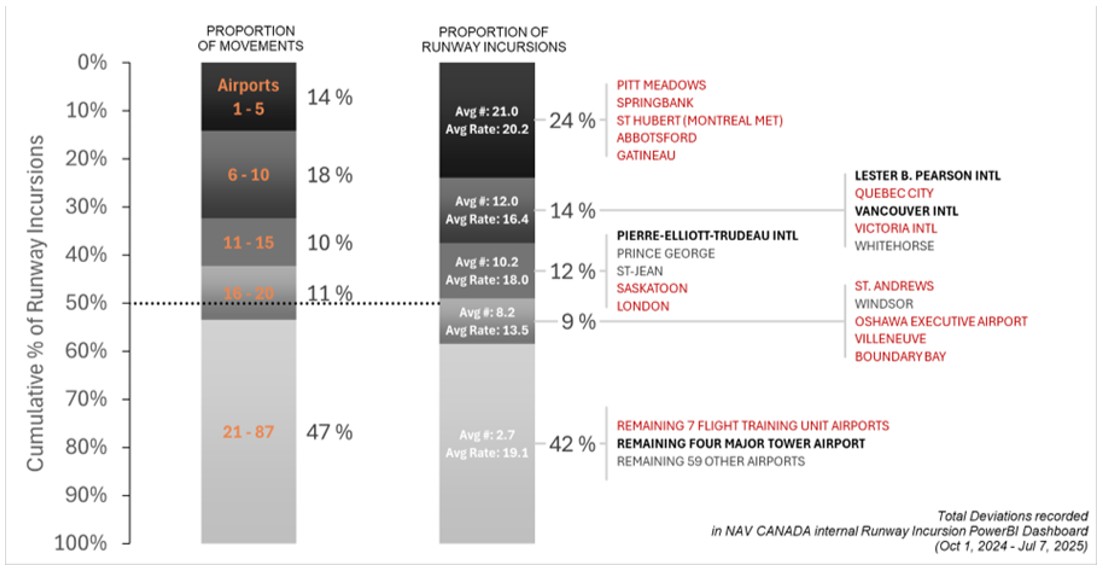Risk of collision from runway incursions
Runway incursions lead to an ongoing risk of aircraft colliding with other aircraft or vehicles.
The situation
Canada sees millions of safe takeoffs and landings each year, yet runway incursions remain a growing concern. Runway incursions have been on the Watchlist since 2010. Since that time, the Transportation Safety Board of Canada (TSB) has completed 17 detailed or limited scope investigations. While few were deemed high risk, even a single collision could have catastrophic consequences. Despite new procedures and technologies, incursions have risen from 539 in 2018 to 639 by the end of 2024.
Number of occurrences
NAV CANADA recorded 639 runway incursions in Canada in 2024. This is the largest number on record in the 15 years for which data are available.
Data provided by NAV CANADA for the period from October 2024 to June 2025 shows that the highest incursion rates came from airports with flight training units (FTUs), particularly at towered airports in British Columbia and Quebec. Twenty airports had 58% of the total number of incursions—13 of them are home to FTUs, five of which account for a quarter of all incursions in Canada.NAV CANADA Internal Runway Incursion PowerBl Dashboard
The TSB has been concerned with runway incursions for many years. In 2019, following a safety issue investigation that focused on two closely spaced parallel runways known as the “south complex” at the Toronto Pearson international airport (CYYZ), the Board made four recommendations to address some of the risks related to incursions.TSB Air Transportation Safety Issue Investigation Report A17O0038. To date, only one has been assessed as Fully Satisfactory.
While no recent collision has resulted from a runway incursion in Canada, the risk remains elevated until stronger defences are in place across airports, in aircraft, airport ground vehicles, and air traffic service (ATS) facilities.
Action taken
Watchlist issues are complex and require coordinated action from operators, regulators and other stakeholders. While some progress has been made, much more is needed.
Canada’s aviation industry has advanced several safety measures:
- Training and procedures: Enhanced training, revised standard operating procedures, and stronger pilot-air traffic controller (ATC) communication.
- Infrastructure: Improved signage, lighting, and hold-short markings to prevent accidental runway entry.
- Technology: Integration of numerous technologies to improve situational awareness and alerting, such as Autonomous Runway Incursion Warning Systems, Runway Occupancy Awareness systems, etc.
- Collaboration: NAV CANADA is supporting the creation of local runway safety teams, conducting awareness campaigns targeted at high-risk areas. They also host the Runway Safety Action Team Sub-Committee on Runway Incursions as part of their Aviation Safety Forum. This event brings together stakeholders from both the public and the private sector to discuss aviation safety.
Action required
Runway incursions will remain on the TSB Watchlist until effective protections are in place at high-incursion airports or there is a sustained reduction in overall rate of incursion. While there is no single solution, reducing the risk of collisions due to runway incursions requires:
- Airport-level defences: Further installation of enhanced signage and lighting, and creation of active local safety teams.
- Technology adoption: Wider use of technologies that increase situational awareness and provide timely alerts.
- Sustained collaboration: Continued strong cross-sector initiatives to identify and close safety gaps.



